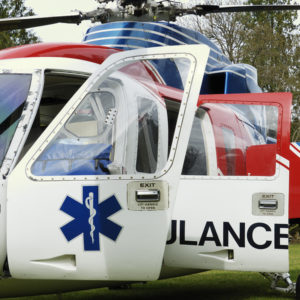Our healthcare marketplace has become so dysfunctional that few people want to pay out of pocket for anything. This has been the context of the recent bipartisan “lower healthcare costs” agreement between the U.S. House and Senate, designed to treat the symptom, not the cause of “surprise medical bills,” of which air ambulance service, in particular, will be singled out.
This deal is no “present,” as Sen. Lamar Alexander (R-Tenn.), chairman of the Senate Health Committee, claims. Rather, it will be one of those gifts you can’t wait to return. This deal gives insurance companies power to undercut private air ambulance companies, who provide the bulk of medical air lifts.
The proposal sets up an arbitration process that will determine reimbursements on a “median in-network rate.” This rate is based on limited claims data and will have the effect of driving down reimbursement rates in a race to the bottom. When a median rate is set, insurance companies will no longer have an incentive to include in their network any provider seeking reimbursement beyond this median. Those providers and their charges will no longer be included in the “median in network” calculations. Set the median over the course of several years, and before you know it, it is down to nothing.
If air ambulances can’t make or lose money, they will simply go out of business. Much of air ambulance service is already underpaid by Medicare and Medicaid. When government underpayment happens to hospitals, they shift the cost onto private insurers. Private insurers accept this practice because it is difficult to sell policies without hospital coverage. Few consumers notice, however, when an insurance company fails to include air ambulance transports within a covered network. The result is a surprise medical bill that can cost as much as a car.
The bite of the “surprise medical bill” is sometimes bigger than the bark. Wyoming, a state that is hugely dependent on air ambulances because of its size and sparse population, compiled data on claims and found 90 percent of patients paid nothing out of pocket for air transport. A majority of claims were paid by a government health program. Of the people who did pay out of pocket, either as self-payers or under insurance with co-pays, the average out-of-pocket cost was $2,250. Only four people paid more than $40,000.
Air ambulance service, obviously, is not free. It is far more expensive than the cost of ground ambulance service because each transport requires the 24/7 services of a pilot, a critical care nurse and paramedic. Air ambulance companies also must comply with a host of regulations, not just state regulations, but also those imposed by the Federal Aviation Administration.
Companies must pay for costly helicopters and planes, including higher fuel costs and liability coverage. Startup fees can reach $3 million, according to industry insiders. Already, air ambulance companies are feeling the financial pressure. In 2019 alone, 50 ambulance bases — 5 percent of all bases in the country — have closed.
Air transport is the one service you hope you never need, but when you do, you thank God it is there. Over the years, but increasingly since Obamacare, hospitals have been closing as they consolidate, leaving large swaths of the nation with no access to critical care.
Trauma centers could be several hours away, not just for people who live in rural areas, but also for those who travel to them — think not-so-dormant volcanos in Hawaii or shark attacks off Cape Cod. Or, if you’re having a stroke, hospital care within 30 minutes can be the difference between life or death, or life with expensive complications. It’s also important to note that community protocols determine when an air ambulance is summoned, so there is protection against frivolous use.
A better alternative to the piece of coal that is the House-Senate proposal would be the solution being advanced by Sen. Robert Wicker (R–Miss.), chairman of the Senate Commerce Committee. Wicker’s proposal calls for a neutral party to resolve billing disputes, instead of arbitration pegged on rate-setting. Additionally, it keeps one of the good provisions in the House/Senate plan, an accurate claims data collection process that includes information not just from insurance companies, but air ambulance providers, in or out of insurance networks.
Lawmakers also need to address the adequacy of insurance networks, which is currently left up to insurers to determine what is medically necessary. Even though there are strict community protocols against the frivolous use of air ambulances, insurance companies deny more than half of air ambulance claims. While many of these are reversed on appeal, it can take months to resolve the disputes. Air ambulance providers should be focused on emergency care, not bill collections.

